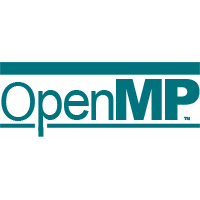
What’s New in Computing vs. COVID-19: Cerebras, Nvidia, OpenMP & More
May 18, 2020
Supercomputing, big data and artificial intelligence are crucial tools in the fight against the coronavirus pandemic. Around the world, researchers, corporation Read more…

15 Slides on Programming Aurora and Exascale Systems
May 7, 2020
Sometime in 2021, Aurora, the first planned U.S. exascale system, is scheduled to be fired up at Argonne National Laboratory. Cray (now HPE) and Intel are the k Read more…

Optimizing Codes for Heterogeneous HPC Clusters Using OpenACC
July 3, 2017
Looking at the Top500 and Green500 ranks, one clearly realizes that most HPC systems are heterogeneous architecture using COTS (Commercial Off-The-Shelf) hardware, combining traditional multi-core CPUs with massively parallel accelerators, such as GPUs and MICs. With processor frequencies now hitting a solid wall, the only truly open avenue for riding today the Moore’s law is increasing hardware parallelism in several different ways: more computing nodes, more processors in each node, more cores within each processor, and longer vector instructions in each core. Read more…
Compilers and More: OpenACC to OpenMP (and back again)
June 29, 2016
In the last year or so, I’ve had several academic researchers ask me whether I thought it was a good idea for them to develop a tool to automatically convert OpenACC programs to OpenMP 4 and vice versa. In each case, the motivation was that some systems had OpenMP 4 compilers (x86 plus Intel Xeon Phi Knights Corner) and others had OpenACC (x86 plus NVIDIA GPU or AMD GPU), and someone wanting to run a program across both would need two slightly different programs. In each case, the proposed research sounded like a more-or-less mechanical translation process, something more like a sophisticated awk script, and that’s doomed from the start. I will explain below in more detail how I came to this conclusion. Read more…

A Comparison of Heterogeneous and Manycore Programming Models
March 2, 2015
The high performance computing (HPC) community is heading toward the era of exascale machines, expected to exhibit an unprecedented level of complexity and size Read more…

New Degrees of Parallelism, Old Programming Planes
August 28, 2014
Exploiting the capabilities of HPC hardware is now more a matter of pushing into deeper levels of parallelism versus adding more cores or overclocking. What thi Read more…

Parallel Programming with OpenMP
July 31, 2014
One of the most important tools in the HPC programmer's toolbox is OpenMP, a standard for expressing shared memory parallelism that was published in 1997. The c Read more…

A Data Locality Cure for Irregular Applications
February 18, 2014
Data locality plays a critical role in energy-efficiency and performance in parallel programs. For data-parallel algorithms where locality is abundant, it is a Read more…

- Click Here for More Headlines

Whitepaper
Transforming Industrial and Automotive Manufacturing
In this era, expansion in digital infrastructure capacity is inevitable. Parallel to this, climate change consciousness is also rising, making sustainability a mandatory part of the organization’s functioning. As computing workloads such as AI and HPC continue to surge, so does the energy consumption, posing environmental woes. IT departments within organizations have a crucial role in combating this challenge. They can significantly drive sustainable practices by influencing newer technologies and process adoption that aid in mitigating the effects of climate change.
While buying more sustainable IT solutions is an option, partnering with IT solutions providers, such and Lenovo and Intel, who are committed to sustainability and aiding customers in executing sustainability strategies is likely to be more impactful.
Learn how Lenovo and Intel, through their partnership, are strongly positioned to address this need with their innovations driving energy efficiency and environmental stewardship.
Download Now
Sponsored by Lenovo
Whitepaper
How Direct Liquid Cooling Improves Data Center Energy Efficiency
Data centers are experiencing increasing power consumption, space constraints and cooling demands due to the unprecedented computing power required by today’s chips and servers. HVAC cooling systems consume approximately 40% of a data center’s electricity. These systems traditionally use air conditioning, air handling and fans to cool the data center facility and IT equipment, ultimately resulting in high energy consumption and high carbon emissions. Data centers are moving to direct liquid cooled (DLC) systems to improve cooling efficiency thus lowering their PUE, operating expenses (OPEX) and carbon footprint.
This paper describes how CoolIT Systems (CoolIT) meets the need for improved energy efficiency in data centers and includes case studies that show how CoolIT’s DLC solutions improve energy efficiency, increase rack density, lower OPEX, and enable sustainability programs. CoolIT is the global market and innovation leader in scalable DLC solutions for the world’s most demanding computing environments. CoolIT’s end-to-end solutions meet the rising demand in cooling and the rising demand for energy efficiency.
Download Now
Sponsored by CoolIT
Advanced Scale Career Development & Workforce Enhancement Center
Featured Advanced Scale Jobs:
HPCwire Resource Library
HPCwire Product Showcase
© 2024 HPCwire. All Rights Reserved. A Tabor Communications Publication
HPCwire is a registered trademark of Tabor Communications, Inc. Use of this site is governed by our Terms of Use and Privacy Policy.
Reproduction in whole or in part in any form or medium without express written permission of Tabor Communications, Inc. is prohibited.
























